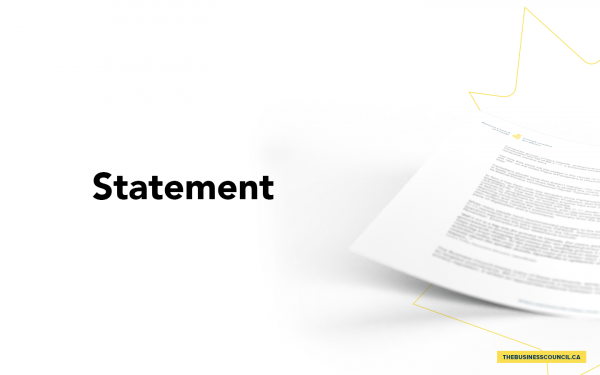Let’s manage climate risks, not disasters
As published by Charles Brindamour and Blair Feltmate in The Globe and Mail.
Canada’s collective efforts to transition to net-zero carbon emissions are critically important. At the same time, we must double down on adapting to the extreme weather effects of climate change we are experiencing right now. Globally, the last decade was hotter than any period in the past 125,000 years, and Canada is heating at twice the global average. Preliminary data suggest that extreme heat at the end of June caused 70 per cent of sudden and unexpected deaths in B.C. We need to outsmart extreme weather, rather than chasing it – management by disaster is not a strategy.
The latest Intergovernmental Panel on Climate Change report provides indisputable evidence that climate change is real, human-induced and effectively irreversible. Supported by a solid business case, Canada has a unique opportunity to lead on accelerating adaptation at home and on the world stage at COP26, the coming UN Climate Change Summit in Glasgow this November. Now we need immediate and aggressive deployment of adaptation measures to limit the effects of otherwise unrelenting extreme weather.
The good news is that Canada has developed practical and cost-effective guidelines to protect us against extreme weather risks such as flooding, fire and heat.
With these guidelines in hand, the time for talk is over. We need immediate action. This doesn’t just fall on the shoulders of government. It requires an all-of-society approach that includes government, non-governmental organizations, businesses and individuals – and we have concrete actions we can mobilize to make ourselves climate-resilient:
1. FUTUREPROOF CRITICAL INFRASTRUCTURE
Things such as our electricity grid, water distribution, roads and food supply chain form the very backbone of our lives, yet are highly vulnerable to severe weather.
Much of this infrastructure has been underfunded for decades. And it will fail when overloaded by a severe climate event. Texas experienced this in February, when winter storm Uri left millions stranded without heat, electricity or running water. This was an avoidable crisis – recommendations made a decade ago for a similar event were ignored.
Every dollar invested in disaster mitigation generates $6 in savings on future disaster costs. Climate-resilient infrastructure could save Canada $4.7-billion a year.
2. BUILD RIGHT THE FIRST TIME – AND IN THE RIGHT PLACES
There’s a misconception that it’s more expensive to build right the first time. In fact, it’s more expensive to retrofit or build back.
We know better than anyone what happens when communities build on flood plains or set up developments atop wetlands. The research has been done and proven solutions are available – flood resiliency guidelines for homeowners, existing communities and for new community design are available from the Intact Centre on Climate Adaptation, and fire-resilient community guidelines are available from FireSmart Canada. We just need our local and provincial officials to fully adopt them.
3. USE NATURAL INFRASTRUCTURE AS A FIRST LINE OF DEFENCE
Forests, grasslands and wetlands aren’t simply decoration on the landscape. They help with flood management and protect us from drought, remove carbon emissions and provide clean water, all while supporting a diverse habitat for plants and animals. Joint research between the Intact Centre and the Insurance Bureau of Canada report that through the preservation of wetlands, we can reduce flood damage costs by up to 40 per cent.
Natural infrastructure also helps to keep our cities cool. On a sunny day in an urban centre, building and road surfaces can get up to 50 degrees hotter, while natural surfaces remain closer to air temperatures.
It’s clear why natural infrastructure is quickly gaining momentum as a front-line climate adaptation solution. Climate mitigation, adaptation and economic benefits make nature a winner. We need to protect the natural infrastructure we have and restore what we’ve damaged.
The extreme events of 2021 alone reinforce that we need to accelerate our work. We have seen recent progress with government announcements and adaptation measures in party platforms. However, as each day goes by, the issues compound and the solutions we implement will have less of an impact. Successfully adapting to extreme weather is key to fighting climate change and keeping our communities safe. It will depend on taking small, collective actions, and the ability of governments to direct resources and implement proven solutions.
Adapting to climate change is good politics, smart business strategy and imperative for our communities. Every day we don’t adapt is a day we don’t have to spare.











